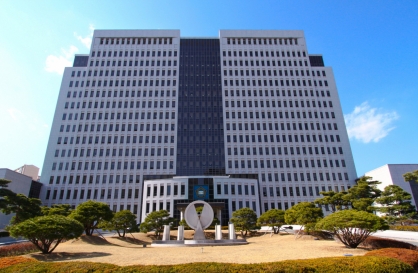The United States successfully conducted the latest test of its ballistic missile defense system early this month, with the THAAD and the Aegis systems working together to intercept multiple targets as intended in a layered defense design, according to a congressional report.
The test was conducted in the vicinity of Wake Island in the western Pacific Ocean on Nov. 1, the Congressional Research Service said in a report on the Navy's Aegis ballistic missile defense program, citing the U.S. Missile Defense Agency.
In addition to the MDA, other participants included the Ballistic Missile Defense System Operational Test Agency, Joint Functional Component Command for Integrated Missile Defense, the U.S. European Command and U.S. Pacific Command, it said.
"The test stressed the ability of Aegis Ballistic Missile Defense and Terminal High Altitude Area Defense weapon systems to negate two ballistic missile threats while Aegis BMD (ballistic missile defense) simultaneously conducted an anti-air warfare operation," the MDA was quoted as saying.
"This was a complex operational test of the BMDs which required all elements to work together in an integrated layered defense design to detect, track, discriminate, engage and negate the ballistic missile threats," it said.
Assets involved in the test included a THAAD battery consisting of a THAAD Fire Control and Communications unit, THAAD launcher, and an AN/TPY-2 radar in terminal mode; a second AN/TPY-2 radar in forward-based mode; Command, Control, Battle Management and Communications; and the USS John Paul Jones Aegis BMD-configured ship with its onboard AN/SPY-1 radar, the agency said.
The test, which was formally designated "Flight Test Operational-02 Event 2a," began when an Air Force C-17 aircraft launched a short range air launch target around 11:05 p.m. (Eastern Time) on Oct. 31.
The THAAD AN/TPY-2 radar in terminal mode detected the target, relayed track information to other assets and launched a interceptor missile and successfully intercepted the target.
While THAAD was engaging the first target, a second and third targets were launched. The USS John Paul Jones launched a SM-3 missile to intercept the second target, but "an anomaly early in its flight" prevented a midcourse intercept, the MDA said.
But the THAAD interceptor, in its terminal defense role, successfully intercepted the target in a demonstration of the importance of layered defense, the agency said. Aegis BMD successfully engaged the third target with an SM-2 missile, it said.
The MDA said it is looking into what went wrong with the SM-3 missile.
The U.S. wants to deploy a THAAD unit to South Korea, where some 28,500 American troops are stationed, to better defend against ever-growing threats from North Korea's ballistic missile and nuclear programs.
But the issue has become one of the most sensitive for South Korea because China sees a THAAD deployment as a threat to their security interests and has increased pressure on Seoul to reject such a move.
Seoul and Washington have claimed they have never held any formal consultations on the issue. (Yonhap)
The test was conducted in the vicinity of Wake Island in the western Pacific Ocean on Nov. 1, the Congressional Research Service said in a report on the Navy's Aegis ballistic missile defense program, citing the U.S. Missile Defense Agency.
In addition to the MDA, other participants included the Ballistic Missile Defense System Operational Test Agency, Joint Functional Component Command for Integrated Missile Defense, the U.S. European Command and U.S. Pacific Command, it said.
"The test stressed the ability of Aegis Ballistic Missile Defense and Terminal High Altitude Area Defense weapon systems to negate two ballistic missile threats while Aegis BMD (ballistic missile defense) simultaneously conducted an anti-air warfare operation," the MDA was quoted as saying.
"This was a complex operational test of the BMDs which required all elements to work together in an integrated layered defense design to detect, track, discriminate, engage and negate the ballistic missile threats," it said.
Assets involved in the test included a THAAD battery consisting of a THAAD Fire Control and Communications unit, THAAD launcher, and an AN/TPY-2 radar in terminal mode; a second AN/TPY-2 radar in forward-based mode; Command, Control, Battle Management and Communications; and the USS John Paul Jones Aegis BMD-configured ship with its onboard AN/SPY-1 radar, the agency said.
The test, which was formally designated "Flight Test Operational-02 Event 2a," began when an Air Force C-17 aircraft launched a short range air launch target around 11:05 p.m. (Eastern Time) on Oct. 31.
The THAAD AN/TPY-2 radar in terminal mode detected the target, relayed track information to other assets and launched a interceptor missile and successfully intercepted the target.
While THAAD was engaging the first target, a second and third targets were launched. The USS John Paul Jones launched a SM-3 missile to intercept the second target, but "an anomaly early in its flight" prevented a midcourse intercept, the MDA said.
But the THAAD interceptor, in its terminal defense role, successfully intercepted the target in a demonstration of the importance of layered defense, the agency said. Aegis BMD successfully engaged the third target with an SM-2 missile, it said.
The MDA said it is looking into what went wrong with the SM-3 missile.
The U.S. wants to deploy a THAAD unit to South Korea, where some 28,500 American troops are stationed, to better defend against ever-growing threats from North Korea's ballistic missile and nuclear programs.
But the issue has become one of the most sensitive for South Korea because China sees a THAAD deployment as a threat to their security interests and has increased pressure on Seoul to reject such a move.
Seoul and Washington have claimed they have never held any formal consultations on the issue. (Yonhap)





![[K-pop’s dilemma] Can K-pop break free from ‘fandom’ model?](http://res.heraldm.com/phpwas/restmb_idxmake.php?idx=644&simg=/content/image/2024/05/09/20240509050541_0.jpg&u=20240509173751)




![[News Analysis] Yoon's first 2 years marked by intense confrontations, lack of leadership](http://res.heraldm.com/phpwas/restmb_idxmake.php?idx=644&simg=/content/image/2024/05/09/20240509050612_0.jpg&u=20240509233252)







![[Today’s K-pop] NCT’s Mark to drop 1st solo album in February 2025](http://res.heraldm.com/phpwas/restmb_idxmake.php?idx=642&simg=/content/image/2024/05/10/20240510050597_0.jpg&u=)